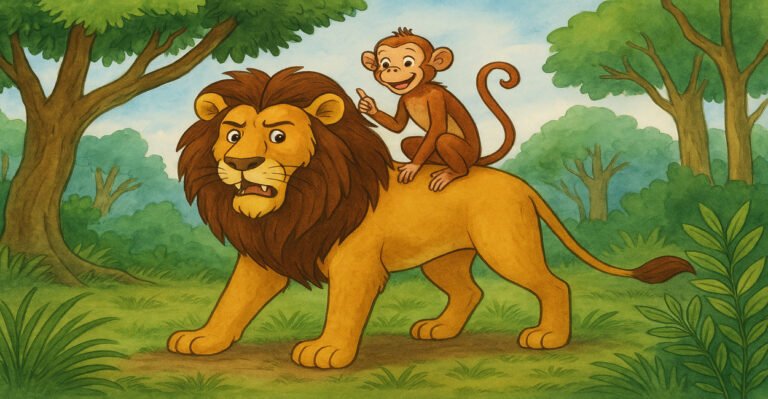The Science Behind Stories About Animals & Their Behavior
Stories about animals have fascinated humans for centuries. From Aesop’s fables to modern-day children’s books, tales of animals and their behavior have a unique way of captivating our hearts and minds. But have you ever wondered why these stories are so compelling? What is it about animals and their actions that make them such powerful subjects for storytelling?
In this blog, we’ll explore the science behind stories about animals, why they resonate with us, and how they can teach us valuable lessons about life, nature, and ourselves.
Why Do Stories About Animals Captivate Us?
The Universal Appeal of Animal Characters
Animals are relatable yet mysterious. They don’t speak our language, but their actions and behaviors often mirror human emotions and experiences. This duality makes them perfect characters for short stories. Whether it’s a clever fox outsmarting its predators or a loyal dog saving its owner, animal characters evoke empathy and curiosity.
The Role of Anthropomorphism
Anthropomorphism is the act of attributing human traits to animals that plays a significant role in making stories about animals so engaging. When animals think, feel, and act like humans, they become more relatable. This technique allows readers to project their own emotions and experiences onto the characters, creating a deeper connection.
The Power of Simplicity
Animal stories often simplify complex human issues. For example, a story about a greedy wolf can teach children about the dangers of selfishness. These tales use animals as metaphors, making it easier for readers to grasp moral lessons without feeling overwhelmed.
The Science Behind Animal Behavior in Stories
How Animal Behavior Reflects Human Nature
Animals in stories often exhibit behaviors that reflect human traits. For instance, a lion’s bravery or a rabbit’s timidity can symbolize human courage or fear. These behaviors resonate with readers because they tap into universal emotions and experiences.
The Role of Instincts
Animal instincts are another fascinating aspect of stories about animals. Whether it’s a bird migrating south for the winter or a bear hibernating, these natural behaviors can be used to teach lessons about survival, adaptation, and resilience.
The Connection to Nature
Humans have an innate connection to nature, and animal stories often highlight this bond. By showcasing the beauty and complexity of the natural world, these tales remind us of our place in the ecosystem and the importance of preserving it.
Why Short Stories About Animals Are Perfect for All Ages
For Kids: Learning Through Fun
Children are naturally drawn to animals. Short stories about animals are not only entertaining but also educational. They help kids learn about different species, their habitats, and their behaviors. Moreover, these stories often include moral lessons that shape a child’s understanding of right and wrong.
For Adults: A Nostalgic Escape
For adults, animal stories can be a nostalgic escape to simpler times. They remind us of the bedtime stories we loved as kids and offer a break from the complexities of adult life. Additionally, these stories often contain deeper themes that resonate with grown-ups, such as love, loss, and perseverance.
For Everyone: A Shared Experience
Animal stories are universal. They transcend age, culture, and language, making them a shared experience for people around the world. Whether you’re reading a classic fable or a modern tale, the themes and characters are relatable to everyone.
The Role of Animal Stories in Teaching Morals
Fables and Their Timeless Lessons
Fables are one of the oldest forms of stories about animals. They use animal characters to teach moral lessons, such as “The Tortoise and the Hare,” which emphasizes the importance of perseverance. These stories are timeless because their lessons are universal.
Modern Animal Stories with Moral Themes
Modern animal stories continue this tradition. For example, a tale about a wolf learning to trust others can teach readers about the value of friendship and cooperation. These stories are particularly effective because they use animals to convey complex ideas simply and engagingly.
The Impact on Young Minds
Children are highly impressionable, and animal stories can have a profound impact on their development. By presenting moral dilemmas through animal characters, these stories help kids understand the consequences of their actions and the importance of making good choices.
How Stories About Animals Connect Us to the Natural World
Highlighting Environmental Issues
Many modern stories about animals focus on environmental themes. For example, a story about a polar bear struggling to find food due to melting ice can raise awareness about climate change. These stories not only entertain but also educate readers about pressing environmental issues.
Promoting Empathy for Wildlife
Animal stories often evoke empathy for wildlife. By showcasing the challenges animals face, these tales encourage readers to care about conservation and animal welfare. This emotional connection can inspire people to take action and protect the natural world.
Celebrating Biodiversity
Animal stories celebrate the diversity of life on Earth. From the majestic lion to the tiny ant, each creature has a unique role to play in the ecosystem. These stories remind us of the beauty and complexity of nature and the importance of preserving it for future generations.
Crafting Engaging Animal Stories: Tips for Writers
Choose Relatable Characters
When writing short stories about animals, it’s important to choose characters that readers can relate to. Whether it’s a brave dog or a curious cat, the animal should have traits that resonate with your audience.
Focus on Universal Themes
Animal stories are most effective when they focus on universal themes like love, friendship, courage, and perseverance. These themes make the stories relatable and impactful.
Use Vivid Descriptions
Bring your animal characters to life with vivid descriptions. Use sensory details to describe their appearance, behavior, and environment. This will help readers visualize the story and connect with the characters.
Incorporate Moral Lessons
Moral lessons are a key element of animal stories. Whether it’s a fable or a modern tale, the story should have a clear message that resonates with readers.
Conclusion
Stories about animals have a timeless appeal that transcends generations. They captivate us with their relatable characters, universal themes, and powerful lessons. Whether you’re a child learning about the world or an adult seeking a nostalgic escape, these tales offer something for everyone.
At Storieslet, we celebrate storytelling’s magic through our short stories collection, including tales about animals and their behavior. These stories not only entertain but also educate, inspire, and connect us to the natural world. So, the next time you read a story about a clever fox or a loyal dog, remember the science and emotion behind it—and let it remind you of the beauty and complexity of life.

Storieslet is a storytelling platform dedicated to bringing joy, learning, and imagination to readers of all ages. From bedtime stories for kids to fairy tales, moral lessons, and thrilling adventures, it offers a diverse collection of captivating narratives. Each story is carefully crafted to entertain, educate, and inspire young minds. With a blend of classic and modern tales, Storieslet ensures a magical reading experience for families. Discover enchanting stories and timeless lessons at Storieslet!







